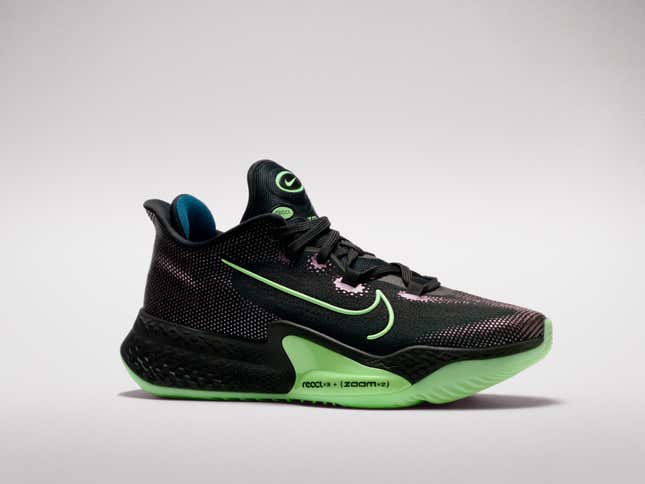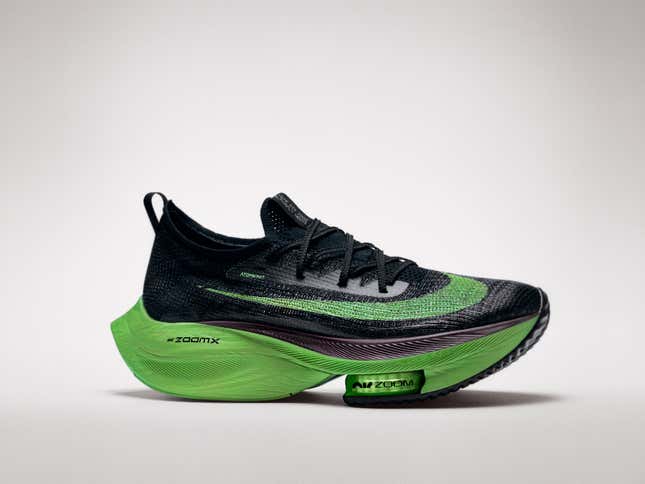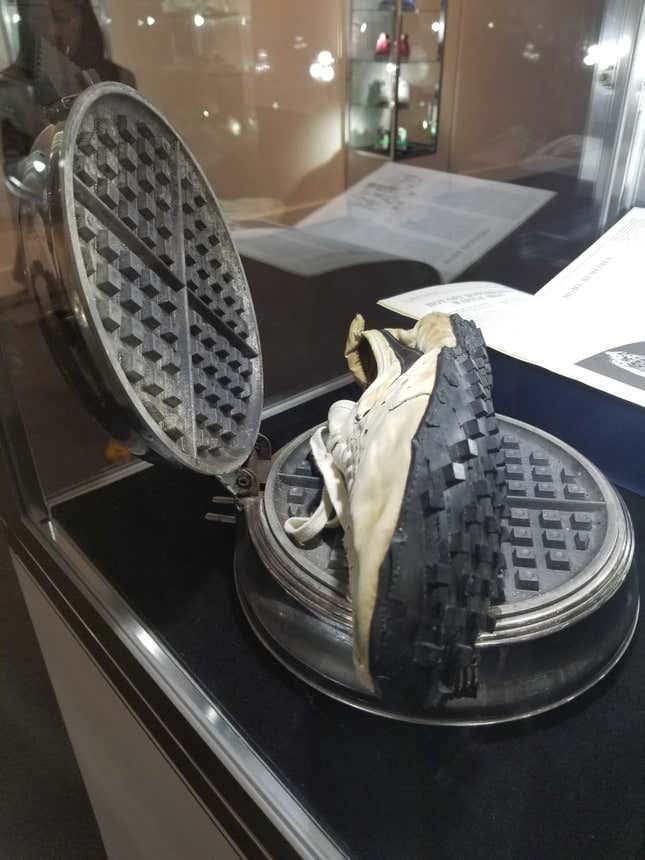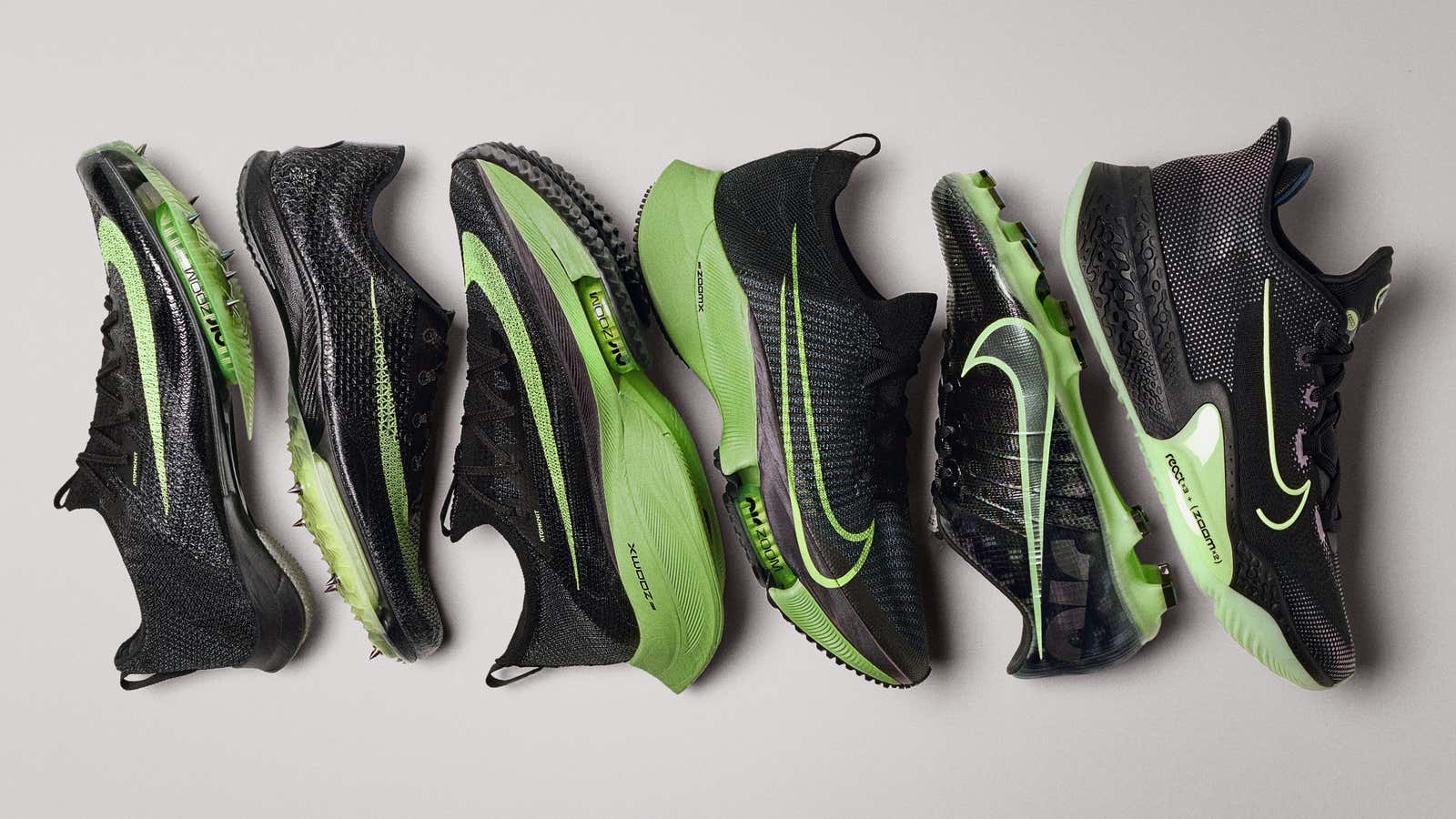Athletic companies love the Olympics. Every four years they get a global stage to show off new products, and if the athletes wearing them win, they claim victory with them. It’s a tradition dating back to at least 1936, when a 22-year-old American named Jesse Owens won four gold medals wearing hand-made shoes with inventively positioned spikes given to him by Adolf Dassler, who would later found Adidas.
In the years since, other shoe companies have gotten a share of the spotlight when athletes made it to the medal stand. At this year’s Olympics in Tokyo, no company has the stage set for it quite like Nike.
In the wake of all the controversy over its Vaporfly and Alphafly marathon running shoes, which some argue work so well they create a mechanical advantage, the company has unveiled a range of new products it says enhance performance, including the next version of its Alphafly. Whether they’re enough to earn gold for the athletes who’ll wear them remains to be seen. But they illustrate the leading role technology and data play in creating athletic footwear today.
At July’s games, Nike’s track runners will have two new shoes Nike says leverage what it has learned from its marathon shoes for shorter, faster races. Its Air Zoom Victory track spike will feature the same ZoomX foam from its marathon line along with a carbon-fiber plate, making for what Nike says is a lightweight shoe with the most energy-return of any spikes it’s made. In the forefoot is what Nike calls a Zoom Air pod, an update of Nike’s usual “air” bags, but with a structure in the center to hold it in a flattened shape, providing better energy return according to Nike. The upper is a material Nike calls Atomknit, a stiffer version of its knitted Flyknit that Nike claims locks the foot down better.
Atomknit also appears in Nike’s other new track spike, the Air Zoom Viperfly, a shoe for sprinters that also uses a carbon-fiber plate and has a Zoom Air pod in the forefoot.

For basketball, the company is introducing the Air Zoom BB, which has two of the Air Zoom pods under the ball of the foot. In the heel, a thin plate sits atop Nike’s bouncy React foam. Nike says basketball players run an average of three to four miles every game, and the shoe is meant to help them stay fresh to the end.

Marathon eligible
Not least is a new road-running shoe for elite marathoners. Called the Air Zoom Alphafly Next%, it takes the performance-enhancing Vaporfly and “ratchets it up several degrees further,” John Hoke, Nike’s chief design officer, said at a press unveiling of the new products in New York on Jan. 29. It contains a wider carbon-fiber plate, two Air Zoom pods in the forefoot, an Atomknit upper, and an even thicker ZoomX foam sole.

Nike unveiled its Olympic shoes two days before World Athletics, the governing body of track and field, released its new rules on the shoes runners can wear in competition. They dictate a shoe must have been commercially available for at least four months before it can be used in competition, it can have no more than one embedded plate, and the sole can be no thicker than 40 millimeters. The Air Zoom Alphafly Next% is slated for release in February, in time for the four-month window to elapse before the Olympics, it has just one plate, and Nike says the sole height is right at World Athletics’ limit, making it eligible according to the company.
World Athletics was responding to concerns that Nike’s shoes conferred an unfair advantage. The footwear all top athletes wear today comes loaded with springy, stabilizing features such as rigid plates and resilient foams, but some materials can work better than others. ZoomX, for instance, is Nike’s name for Pebax, a foam created by chemical company Arkema that Runner’s World found to offer much better energy return than others on the market. Pack a carbon-fiber plate in it, as Nike did, and it seems it can make a notable difference for a runner over the course of a marathon.
These products keep getting more technologically advanced in part because the design capabilities behind them do too. To make its products for the 2020 Olympics, Nike says it incorporated data and insights culled at the Nike Sport Research Lab, which uses scanners and sensors to analyze athletes in motion, providing the designers with sophisticated digital models. ”It’s always been an endeavor for the past 50 years to improve the performance of athletes,” Hoke said in an interview. “The difference today is we have an incredibly deep dataset. We get to study down at the molecular level of wiring up athletes and stopping and studying very specific fractions of inches and spaces, because frankly that’s where gold medals are won or lost.”
Origins in waffle irons
The way companies like Nike and its rivals create performance footwear has changed to such a degree as to make earlier efforts seem practically primitive. One of Nike’s foundational legends involves co-founder Bill Bowerman, the track coach at University of Oregon and an inveterate tinkerer, pouring liquid urethane into a waffle iron to produce the grippy “waffle tread” the company used on running shoes. In his memoir, Shoe Dog, Nike’s other cofounder, Phil Knight, who ran for Bowerman at Oregon, described his former coach filling a cement mixer with shredded tires and different chemicals in search of the perfect rubbery material for a sneaker sole.

Nike isn’t guaranteed the lead in this technological arms race. Other companies, such as Hoka One One and Saucony are also embedding plates in their own propulsive foams to give their runners an edge. Later this month, running company Brooks will release its own competitor to Nike’s marathon shoes. Nike’s real advantage may be that it has deeper pockets than its rivals.
To that end, its aim with these new products isn’t just to make a point at the Olympics. It wants to integrate the features into other items it can sell to more casual athletes. This fall, it will release the Air Zoom Tempo Next%, an everyday training shoe that uses reworked versions of the features found in the Air Zoom Alphafly Next%. It will have a full-length carbon-fiber plate sandwiched in ZoomX foam, with Air Zoom pods placed in the forefoot.
Whether any of this innovation will translate to sales is an open question though. Just a fraction of shoppers buy shoes engineered for high performance. In the US, for instance, the top-selling shoes at big retailers last year were models such as Nike’s Air Max 270 and Air Force 1, both lifestyle sneakers more often used casually than for sports. Price is a factor too. That forthcoming everyday training shoe, Air Zoom Tempo Next%, will cost $200. Across big US retail chains, the average price of a Nike men’s shoe in the US is about $76, according to data from research firm NPD Group. It might be higher at Nike’s own stores and website, but $200 is still steep for the average consumer.
But these performance features are also marketing for the brands pushing them. They’re a way of saying, “We outfit the best, and if you want to be your best, we have the shoes for you.”
